Are You A Vanguard? Applications Now Open
Jedwin Mok
This is your first of three free stories this month. Become a free or sustaining member to read unlimited articles, webinars and ebooks.
Become A MemberEveryone knows how it goes: A street redesign is proposed to calm traffic. Municipal planners and engineers study the project for years, producing reports detailing its importance for sustainability, congestion reduction and traffic safety. Despite this, the project faces massive backlash at community engagement events, with residents complaining about lost parking and increased congestion. In the end, local politicians cancel the redesign, citing a “lack of social acceptability.”
This story is all too common in cities across the U.S. and Canada, and it’s not because of “car culture” or “a lack of advocacy.” The North American planning process is broken — and our neighbors across the Atlantic may have the solution. Enter street experiments.
In August 2022, I had the privilege of spending several weeks in Europe learning about street experimentation with the Technical University of Munich and Humankind. I now strongly believe it is the single most effective tool for rapid urban change and public participation.
Street experiments are temporary and low-cost changes to the urban realm, usually reallocating space used by private cars for other forms of mobility or activity. Experimentation is the key: Through it, new uses of urban space can be realized without significant long-term commitment.
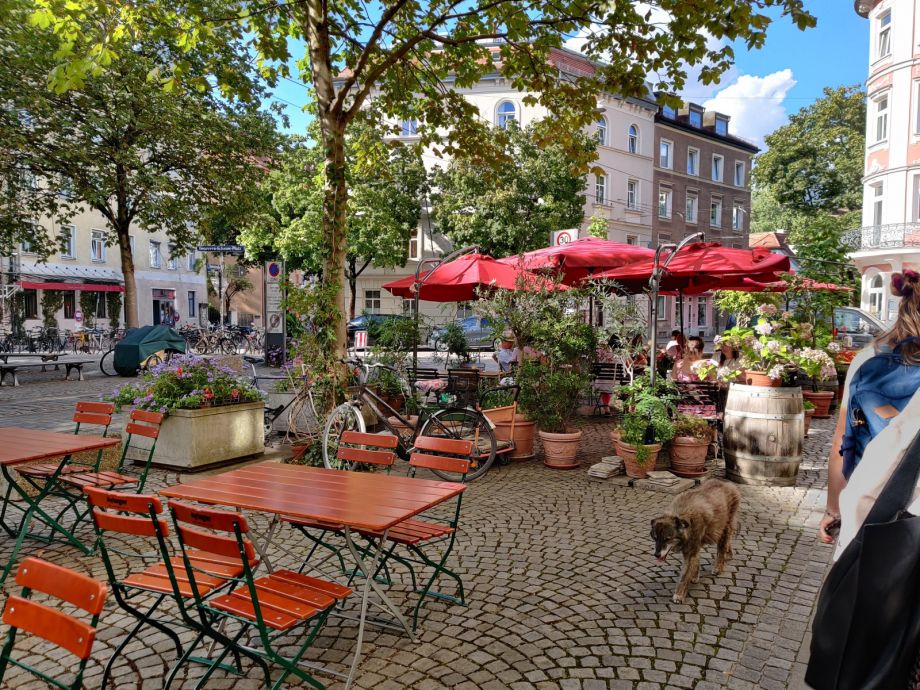
A few simple benches, tables, and planters have turned subsidized street parking into economically productive dining space, integrating the restaurant with its surroundings. By blurring the lines between private and public, this Munich street is made lively and inviting.
Street experiments are incredibly cheap and quick to implement. What matters isn’t the quality of infrastructure, but the reallocation of space for different uses. It’s also easier to sell to the public on a “temporary” measure; if it doesn’t work, simply remove it.
Why spend thousands on abstract renders when change can be made tangible with a temporary intervention? With street experiments, planners and residents can physically test and observe effects with low cost and risk, learning in real time how people utilize new public spaces.
Thus the established realm of possibility is broken. Citizens realize that the allocation of space in a city is subject to change, sparking questions like “Why can’t the road outside my house be a playground for my kids?” Street experiments are a creative exercise, enabling a new imagination of what is possible.
Unlike obscure “consultation” meetings in suburban school gyms, physical interventions directly engage the communities they serve, raising awareness and making public comment accessible to all. Since change is tangible, projects are experienced and critiqued by actual stakeholders – including marginalized groups who are often excluded from traditional public engagement processes.
By passing through the space, all citizens are involved in the planning process.
In Munich, we were given an opportunity to turn two parking spaces into a parklet. No lengthy “community consultations” or “environmental review” were required, just a permit from the city government. Most planners from North America would regard this as “authoritarian” and “inconsiderate of residents.” Surely, there would be backlash from the local community.
Instead, the opposite happened: During construction, people walking by became curious and engaged. Many asked questions, tried out the parklet and even offered a helping hand. This level of community involvement would never be possible with traditional planning processes.
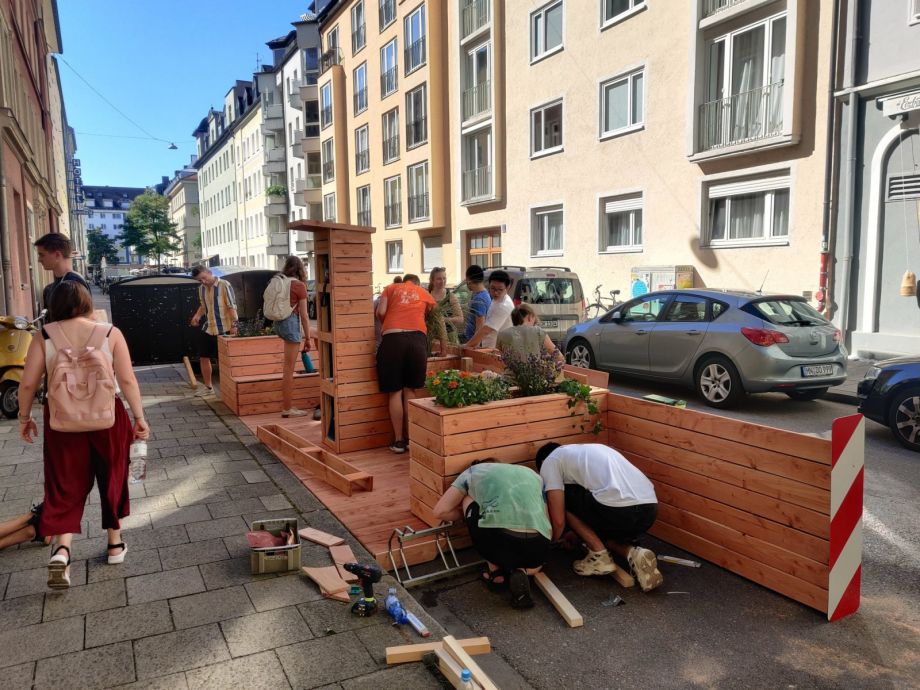
A parklet under construction on Steinheilstraße by urban mobility students, planned by the Technical University of Munich in collaboration with München Unterwegs (2022). The project was so successful that one year later, traffic calming measures were extended to the entire block.
It’s a bit of an oxymoron: Authoritative change without public consultation is a catalyst for greater democratic participation. Rapid changes are no longer combative with the local community; rather, it becomes a collaborative process — strengthening trust and producing valuable feedback for iterative improvement.
This is how so many cities have created a “culture of urban change,” an acceptance from the public that dynamism is inherent to urban places. It requires both authoritarian (“top-down”) and grassroots (“bottom-up”) planning — where municipalities and their citizens feel a sense of ownership over public space.
Street experiments are fundamentally an exercise in data collection. The planning process becomes evidence-based and empirical, centered around measurable outcomes.
The purpose of street experiments isn’t just to repurpose urban space for a few months. The end goal is to create lasting and systemic change. Data is the proof in the pudding — it’s how permanent change can be justified and detractors’ credibility weakened.
Take this busy intersection in Amsterdam, where to massive public controversy the city completely shut off traffic lights as an experiment. Conventional traffic engineering wisdom would say that unsignalized intersections are dangerous and low-capacity.
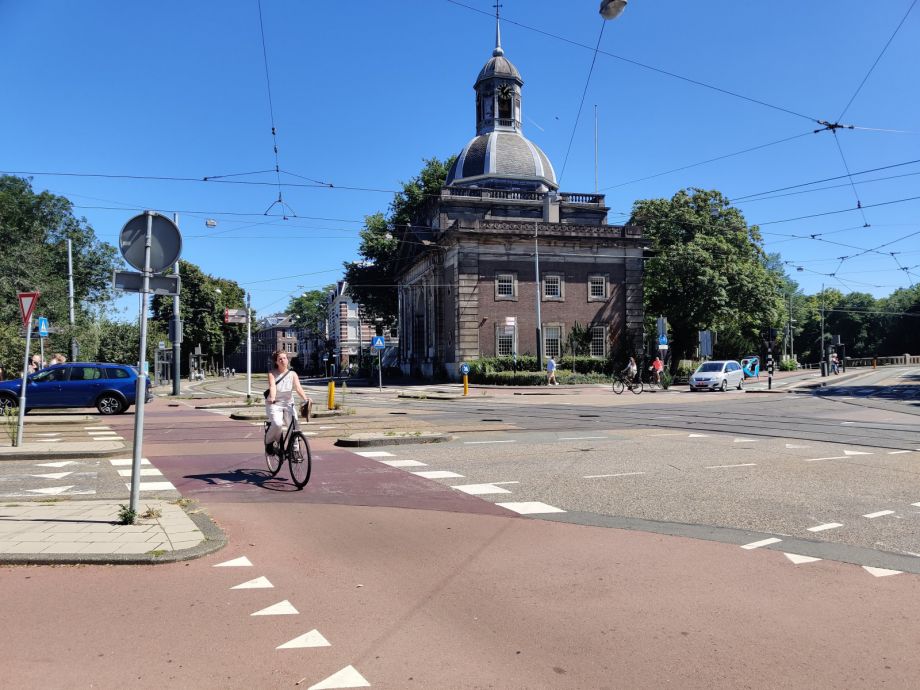
Users of all modes (tram, bike, and car) safely interact at this intersection without any traffic signals. Learn more about data in street experiments from my colleagues at the University of Amsterdam (George Liu, Katherine VanHoose).
Robust data collection and analysis from this experiment proved otherwise: Road users became more aware, while traffic was reduced. Not only was this pilot successful - it was proof that the necessity of traffic controls was questionable when accompanied by good street design - changing prior preconceived street planning notions.
This is fundamentally why street experiments are so powerful for creating permanent and lasting change. Despite being ‘temporary’, they are a concrete implementation of urban change to be experienced, rather than just an idea or visualization to be shown.
So how can North American cities get involved in the street experiments craze? Short answer: We already have.
From New York City’s street parking cafes to San Francisco’s “slow streets” program, cities all over the U.S. and Canada questioned the dominance of motor vehicles during the COVID pandemic, experimenting with new ways of using public space. However, with the “return to normalcy,” these cities have seemingly forgotten the successes and progress made with their pandemic-era programs.
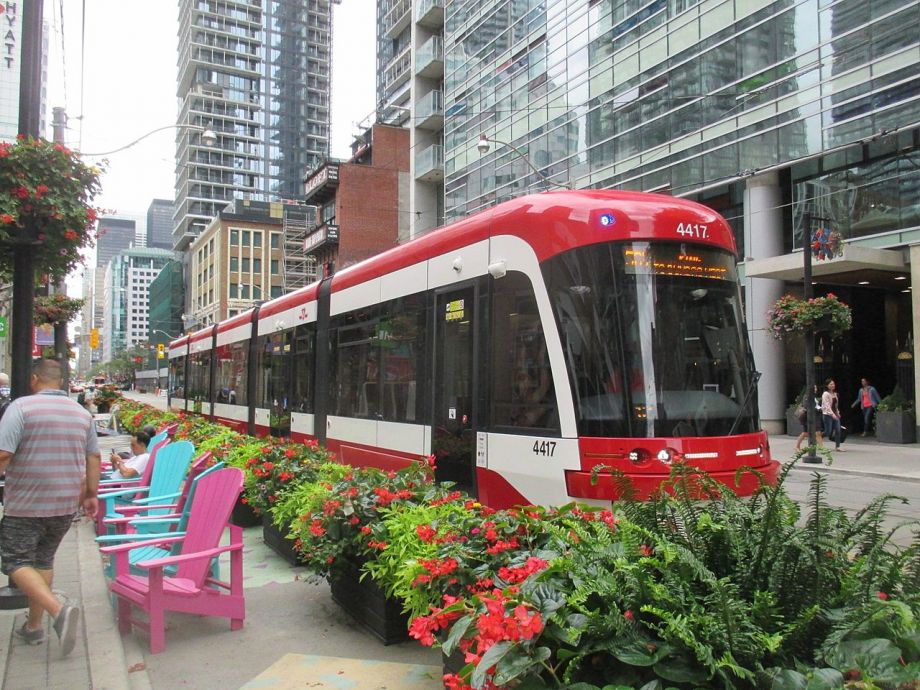
Toronto’s King Street “Pilot Project” shut down through traffic on a busy downtown street to ease congestion for streetcars and open up more pedestrian space. As a result, the 504 King streetcar line is now the single busiest surface transit route in North America. (Photo by TheTrolleyPole / Wikimedia Commons)
What’s worse, the dysfunctional planning processes plaguing North American cities have only been reinforced post-pandemic. Even on “pilot projects,” it’s common for municipalities to spend more resources on public consultations and “equity” studies than actually taking action and creating positive change.
American cities have a “process fetish.” Our planning is no longer driven by empirical outcomes, but rather by the appearance of equitability and inclusiveness within the planning process.
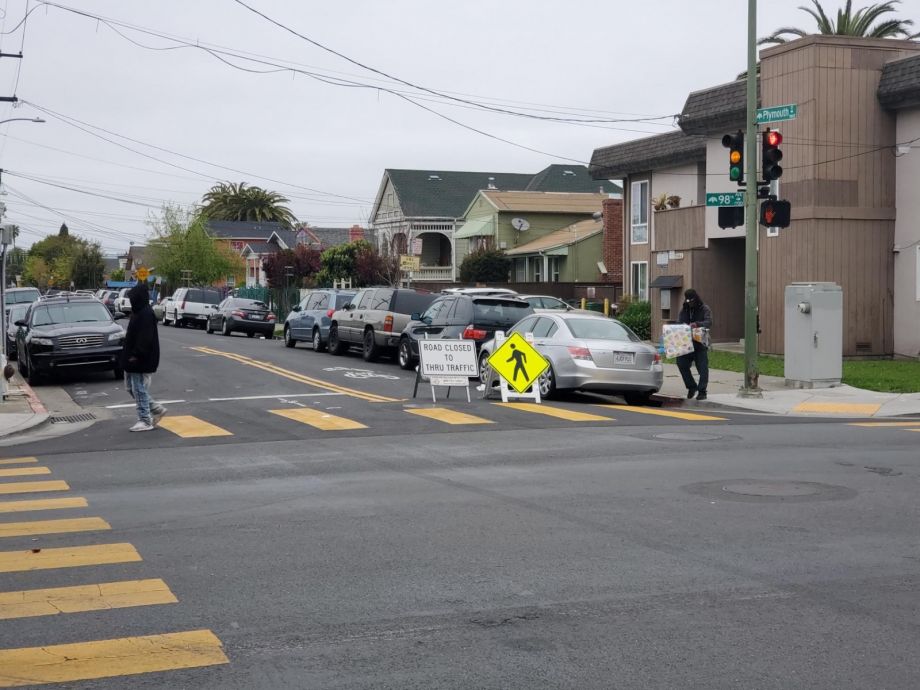
During the pandemic, Oakland, California blocked through traffic on nearly 21 miles of city streets to create safer, traffic-calmed spaces for active mobility. The program has now since completely ended. It's a tremendous backward step for road safety and livability. (Photo by the City of Oakland)
It’s not public participation itself that is the problem; rather, the systems and institutions we’ve designed to enable participation are fundamentally flawed. These systems create an illusion of inclusiveness while enabling certain groups to marginalize others. How can we claim that American planning processes better serve marginalized communities when environmental review is constantly weaponized to prevent the construction of denser housing and rapid transit? When the privilege of public comment is only granted to those with time and money?
In our obsession with process and perfection, we’ve lost our imagination – the one thing preventing us from overcoming the car-centric status quo. But we can’t afford to let perfect be the enemy of good. There’s a climate crisis, a housing crisis and constant traffic violence on our streets. People don’t need more studies, they need action.
The lesson here isn’t that participatory planning is bad, but instead that building livable, inclusive and sustainable cities is a creative exercise requiring constant revision. We need to build places that aren’t scared of failure, embrace change and empower people to imagine the impossible.
Featured photo: With a few signs and planters, this residential street in Munich was made entirely car-free. Unexpectedly, the neighborhood came together to organize activities. The street became alive. Who would’ve thought a road built for cars could become a face-painting station for kids?

Jedwin Mok is a researcher at the Urban Cycling Institute in Amsterdam and a former transportation data analyst at the City of Toronto. He’s also the Creative Director of CityUX, an urban consultancy based in Tallinn, Estonia.

20th Anniversary Solutions of the Year magazine